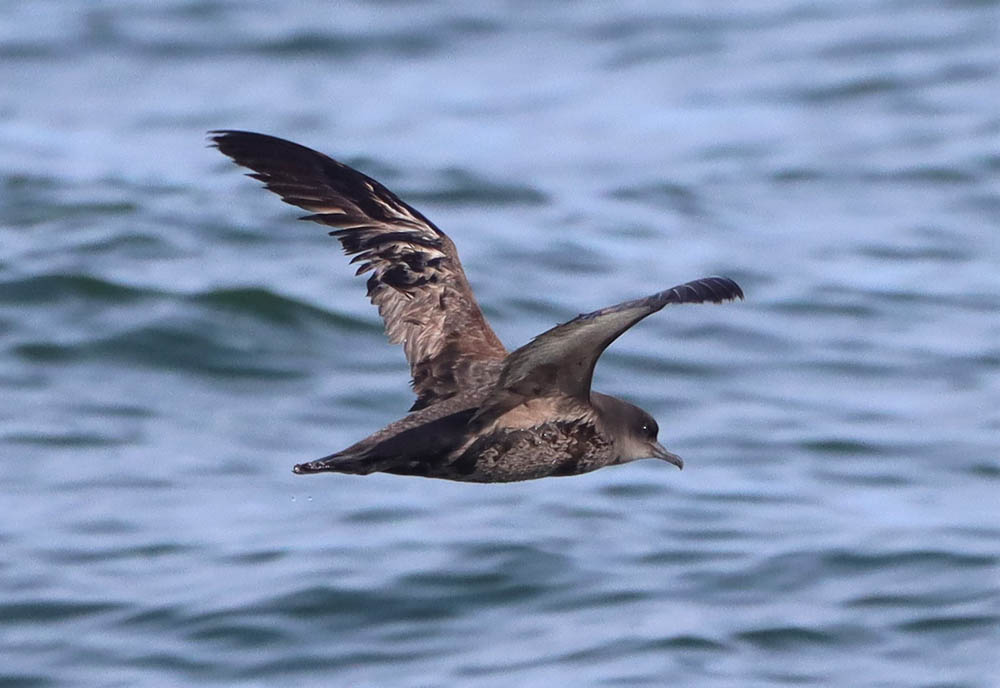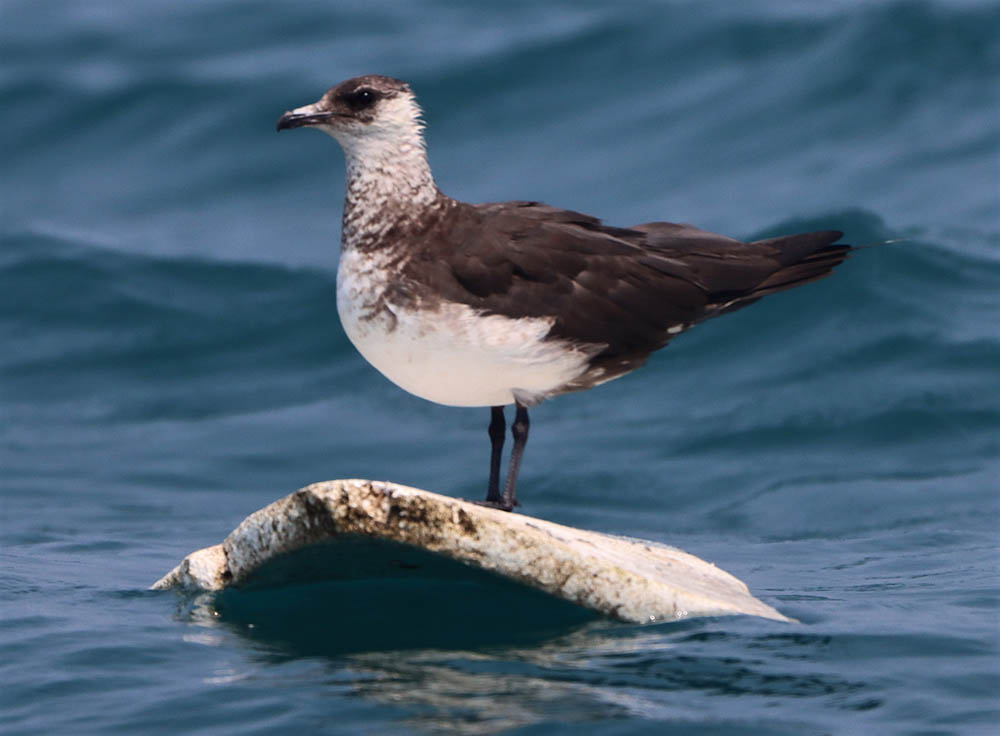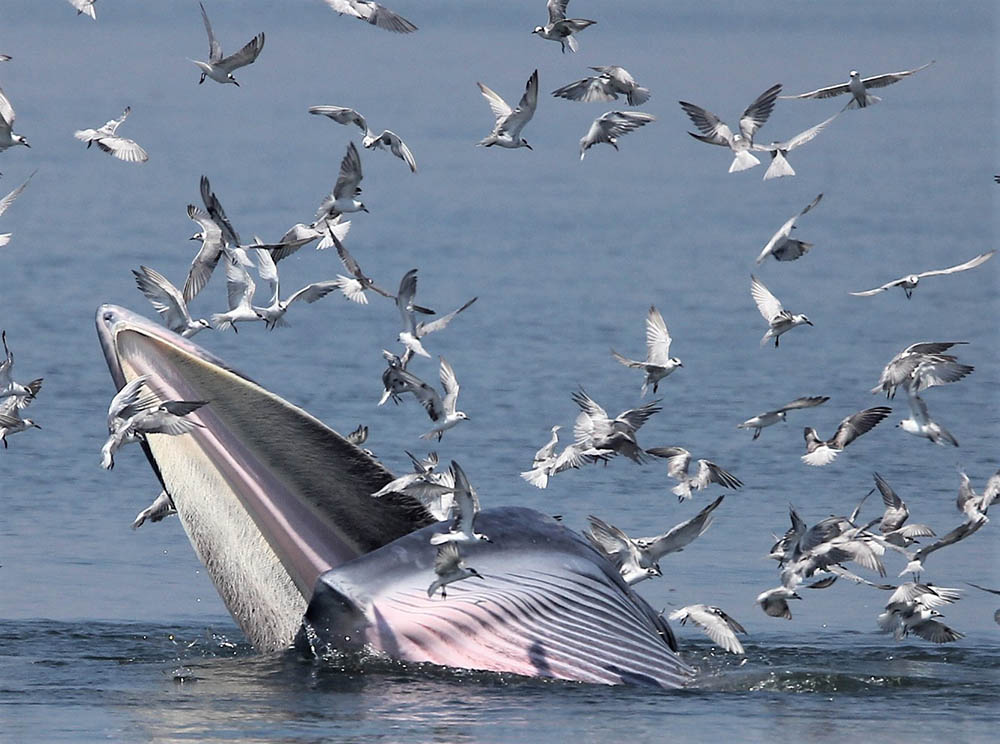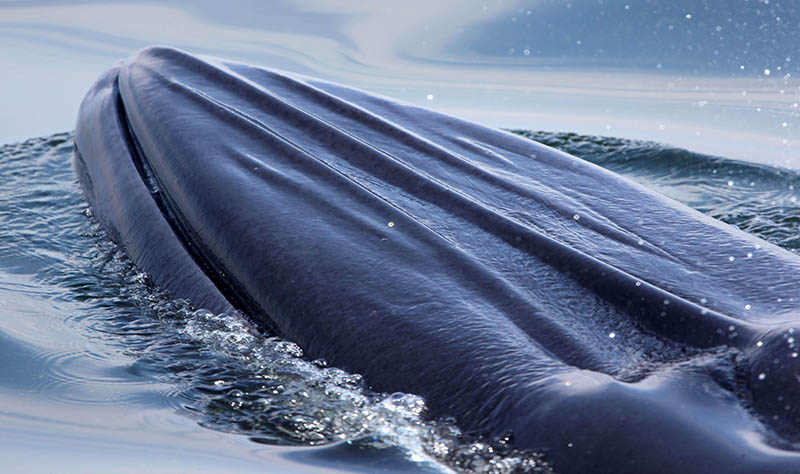All photos Coke Smith
In my final edition of Bangkok Wildlife Watching with Coke, I want to highlight something that may be familiar to many but is nonetheless spectacular: the famous whale-watching that can be had off the coastline.
As many know, residing in the upper gulf is a species known as Eden’s Whale, or Balaenoptera edeni, which is still commonly confused with its slightly bigger cousin, the Bryde’s Whale. They’ve been a part of the gulf ecosystem for tens of thousands of years; with their remains found hundreds of kilometers north in the upper reaches of the Chao Phraya River Basin, when sea levels were much different.
Currently there are over 200 leviathans living in our vicinity and they can be seen with a fair amount of success aboard boats that go out regularly. Watching these 15-meter mammals gently swim in pursuit of anchovies and other small fish is an experience everyone should have. However, what is unique about this population is that our local Edens can be seen “trap feeding” on a fairly regular basis. Trap feeding is a very rare feeding strategy where by whale use their fluke – the two large tail lobes – to maintain a fairly static buoyancy to stay at the surface of the water. From there, they open their massive mouths to simply allow the small fish to fall in – the “trap” – and be consumed. In addition, some scientists believe they have observed whales actually “standing” on the bottom of the shallow sea with their caudal fins being used like legs to feed this way.
The cool thing is that not only whales can be seen on these boating expeditions. On a recent weekend, I went out to sea searching and was very fortunate to see a small pod of one of the world’s rarest mammals – the Irrawaddy Dolphin! These playful little cetaceans were very active that afternoon and provided a show we will never forget. On top of rare animals, serious birders might be lucky enough to spot extremely rare avian vagrants to our area, such as the Short-tailed Shearwater and Parasitic Jaeger, which are species that one would expect to see in Arctic and subarctic waters, but every year one or two make their way to the gulf!
The trip involves the better part of the day with expert spotters and cetacean naturalists. Trip organizers include Love Wildlife Foundation’s ChomWhales (Three dates in September for THB2,400 per person, includes transportation, insurance, lunch), Bangkok Whale Watching and Wild Encounter Thailand, whose new whale-watching boat is state of the art and very comfortable. Due to current pandemic restrictions, most tours are suspended temporarily.










Want to see amazing birds without traveling far or other wildlife around Bangkok? Check out my previous installments:
Bangkok’s fantastic beasts and where to find them (Photos)
Don’t melt down at home, Bangkok. Not when these nearby nature hotspots call! (Photos)
If you would like more information on these trips, please contact the author. Coke Smith is environmental science leader at Bangkok Patana School and an avid nature photographer. Coke has published his wildlife images in books and magazines over the years and has been included in publications by BBC Planet Earth and Nat Geo Science.



Reader Interactions